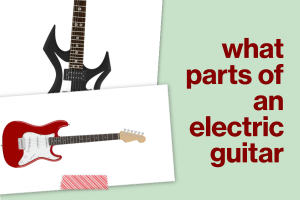
Tuning might seem like a small part of playing, but let me tell you, it’s the foundation of sounding great every time you pick up your guitar. The standard tuning, E-A-D-G-B-E, is our north star in the vast sea of music. That’s where the magic of a good tuner comes in.
In this guide, I’m spilling all the beans on how to get your electric guitar perfectly in tune with the help of a tuner. We’re talking crystal-clear, step-by-step instructions that’ll have your guitar sounding pristine. Whether you’re about to rock a gig or serenade your room walls, I’ve got you covered.
Why Should You Tune Your Electric Guitar With a Tuner ?
First off, when you tune your electric guitar with a tuner, you’re ensuring that each string is pitch-perfect. This precision is hard to achieve by ear, especially in noisy environments or if you’re still developing your musical ear. There’s nothing more satisfying than strumming a chord and hearing that crystal-clear harmony because every string is in perfect tune.
Tuning by ear can be a bit of a hassle, especially if you’re eager to get playing. Using a tuner is quick and efficient, getting you back to what you love doing faster. A few clicks and you’re good to go, leaving more time for jamming and less for tuning.

For beginners, using a tuner is an excellent way to familiarize yourself with the sound of each note. It’s a learning tool that subtly enhances your musical ear over time. And for the seasoned players, it’s about maintaining consistency in your sound, whether you’re practicing at home or rocking out on stage. Consistency is crucial for building confidence in your playing, and a tuner helps you achieve just that.
Humidity and temperature can mess with your guitar’s tuning. Playing an outdoor gig or moving between venues? A tuner is your best friend, helping you quickly adjust to ensure your guitar sounds its best, no matter where you are. It’s the peace of mind knowing that external factors won’t dampen your performance.
Whether you’re just starting your electric guitar journey or you’ve been playing for years, remember that tuning with a tuner is a simple step that has a big impact on your sound.
What are types of electric guitar tuners ?
Your electric guitar typically has six strings. From thickest to thinnest, they are E, A, D, G, B, and E. Remember: “Eddie Ate Dynamite, Good Bye Eddie.” A quirky line, but it sticks!
As someone who’s strummed the electric guitar for years, I’ve had my fair share of tuners. They’re like trusty companions on your musical journey. Let’s talk about the three amigos of the tuning world:
Microphone-Based Tuners
These guys listen to your guitar’s sound through a microphone. I’ve used them in quiet rooms where they work like a charm. They’re great for acoustic guitars, but can be tricky with electrics, especially in noisy environments.
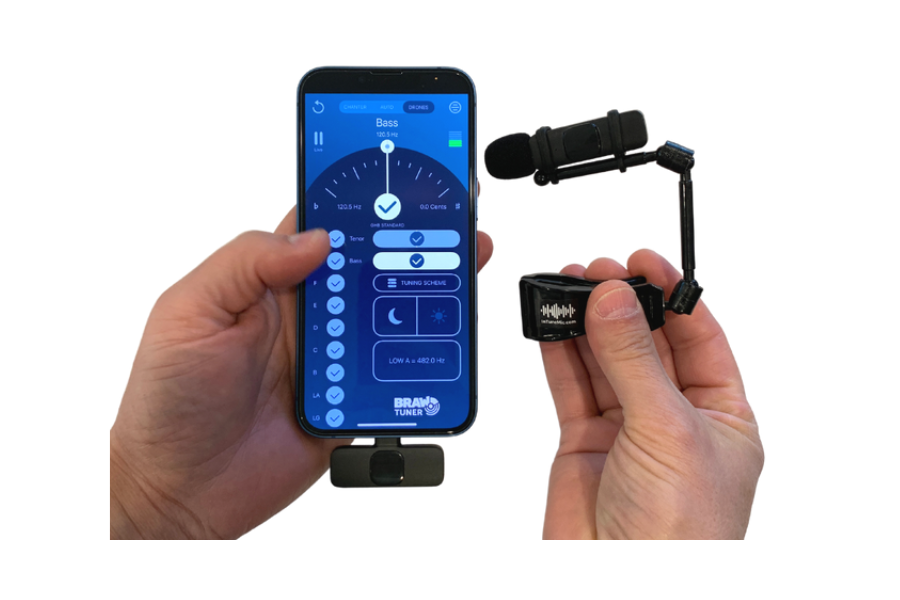
Vibration-Based Tuners
Now, these are my personal favorites. They clip onto your guitar and tune by feeling the vibrations. It’s like they’re in sync with your guitar’s soul. Perfect for loud environments or when you’re surrounded by other musicians.
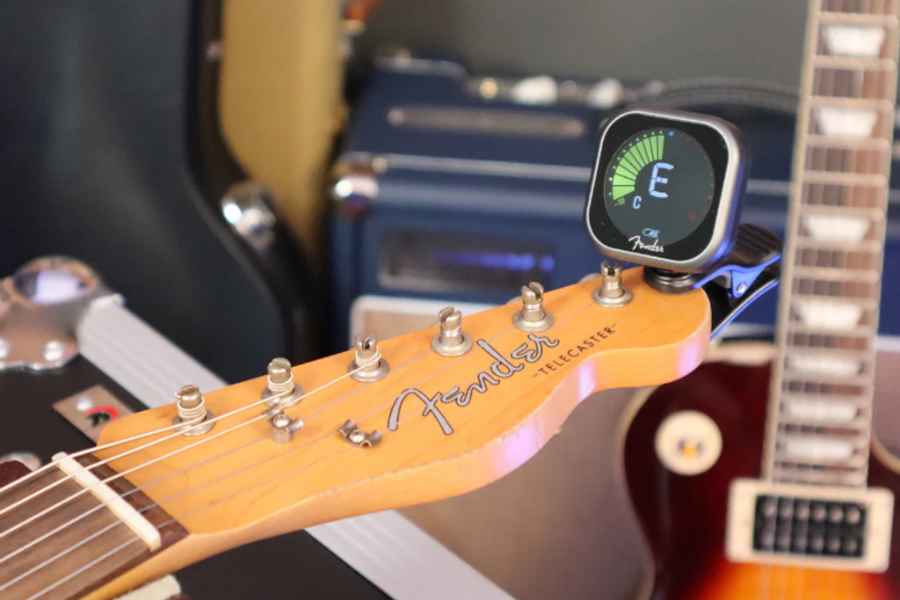
Plug-in/Pedal Tuners
The big guns for live performances. You plug your electric guitar directly into these. They’re super accurate, and nothing – I mean, nothing – disrupts them. A must-have if you’re gigging.
I made a table to help you choose which one will be best for you below:
| Tuner Type | How They Work | Best For | My Two Cents |
| Microphone-Based | Picks up sound through a microphone. | Quiet environments where the guitar’s sound is uncontested. | Great for beginners, simple and intuitive. But can struggle in noisy places. |
| Vibration-Based | Clips onto the guitar and senses string vibrations. | Noisy, crowded areas where ambient sound is an issue. | My go-to choice. Reliable in any setting and super convenient. |
| Plug-in/Pedal Tuners | Electric tuner where you plug your guitar in directly. | Live performances and studio recordings. | A bit more expensive, but the accuracy and reliability on stage make it worth it. |
How to tune an electric guitar with a tuner ?
Tuning Your Electric Guitar with a Microphone-Based Tuner
Setting Up Your Space: First things first, find a calm and quiet spot. These tuners are like your attentive audience; they listen to your guitar. So, make sure they can hear it without any background noise crashing the party.
Place it close to your guitar. It doesn’t need to be attached; just make sure it’s close enough to clearly pick up the sound of your strings. Turn it on, and let’s get those strings in tune.
Now, start with your low E string (that’s the thickest one). Strum it, and watch the tuner. You’ll see the note it’s playing.
Our goal is to get that note right on the dot. If the tuner shows it’s too low (flat), tighten the string by turning the tuning peg away from you.
If it’s too high (sharp), loosen it by turning the peg towards you. Take it slow, one small turn at a time.
Repeat this for each string: E, A, D, G, B, E. Sometimes you might have to go back and re-tune a string, and that’s totally okay.
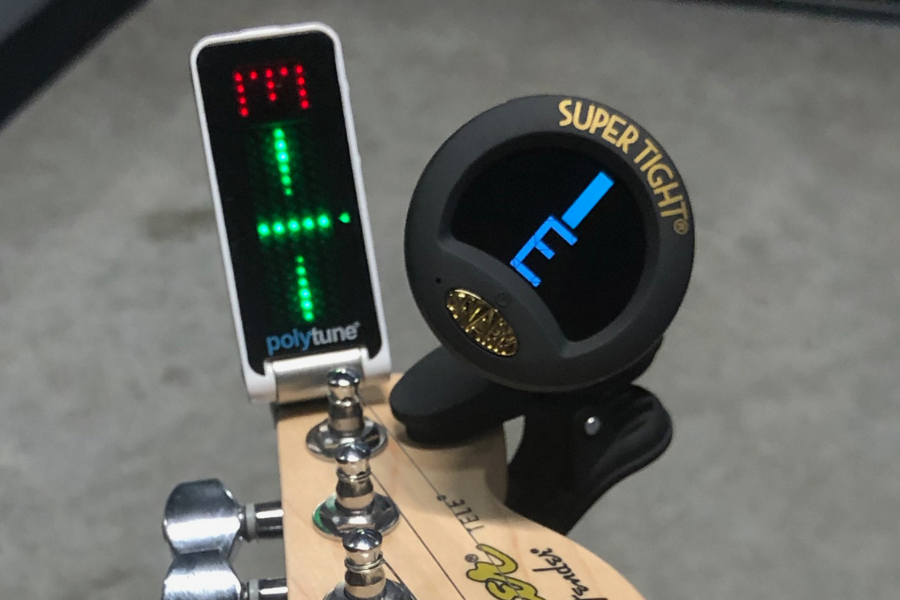
If your tuner seems confused or isn’t picking up the sound, check if it’s properly positioned. It might be too noisy around you, or your guitar’s volume might be too low.
Tuning Your Electric Guitar with Vibration-Based Tuners
Clip the tuner onto your guitar’s headstock. Make sure it’s snug so it can feel the string vibes. Turn it on, and you’re ready to roll.
We’ll start with the low E string again. Strum it and check the tuner’s display. Is the needle or indicator off-center? Time to adjust. Turn your tuning peg slowly until that needle hits the sweet spot right in the middle.
Now, repeat this for the A, D, G, B, and high E strings. Remember, it’s all about small adjustments. Tuning is a delicate dance – you lead, and your guitar follows.
If you’re not hitting the perfect pitch, don’t sweat it. Sometimes you need to go back and fine-tune a string after you’ve tuned the others. It’s all about balance.
If the tuner’s not responding, check its battery. Also, make sure it’s properly attached to the headstock. Try a quieter spot; even vibration-based tuners can get a bit overwhelmed in a super noisy environment.
They’re quick, they’re accurate, and they don’t care about the drummer’s solos or the crowd’s cheers. In the studio, they’re just as awesome, giving you that crystal-clear tuning for flawless recording.
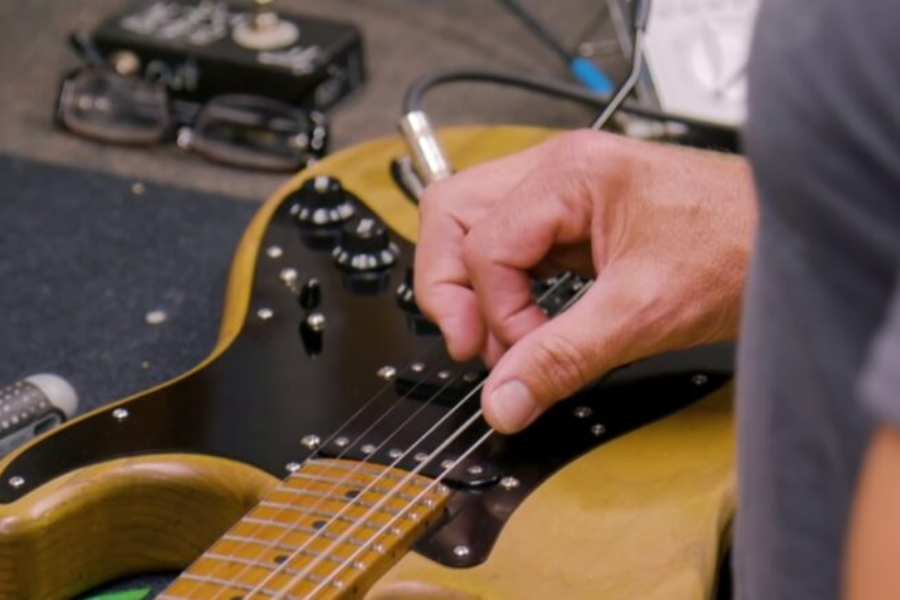
If the tuner isn’t responding, check your cables and connections first. Everything plugged in tight. If it still isn’t working, it might be time for a fresh battery or to check your power supply.
Tuning Your Electric Guitar with Plug-in/Pedal Tuners
These tuners are the secret weapon of many electric guitarists, especially during live shows or studio sessions. They’re sturdy, reliable, and super accurate. Plus, they’re immune to all that background noise.
First off, connect your guitar to the tuner using a standard instrument cable. Then, if it’s a pedal tuner, you’ll want to plug it into your amp. It’s like setting up a mini circuit: guitar to tuner, tuner to amp.
Turn on your tuner and start with the low E string. Pluck the string and check the display on the tuner. If the note’s too low (flat), tighten the string by turning the tuning peg clockwise. Loosen it by turning the peg counterclockwise.
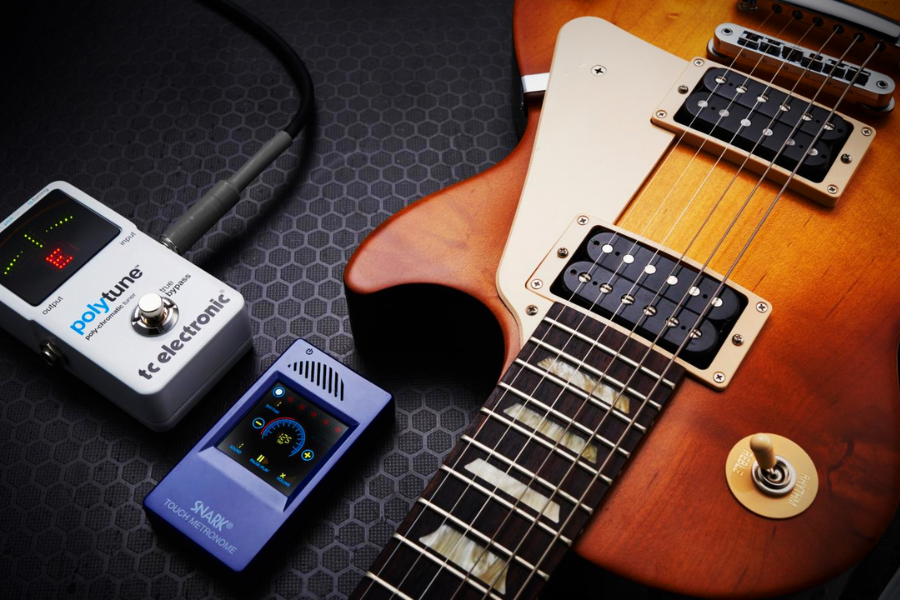
Repeat this for each string, following the standard tuning of E-A-D-G-B-E. The beauty of these tuners is their precision. You’ll see exactly how close you are to the perfect pitch.
Wrapping up
Tuning your electric guitar isn’t just a prelude to your practice or performance; it’s the foundation upon which your music builds. With a tuner in hand, you ensure accuracy, save precious time, and, most importantly, enhance the quality of your sound. It’s like giving your music the respect it deserves, ensuring every note you play is pitch-perfect.
Grab your tuner, pluck those strings, and let the magic happen. Whether it’s a quiet evening at home, jamming with friends, or stealing the spotlight on stage, tuning your electric guitar with a tuner ensures you’re always ready to give your best performance. Because at the end of the day, it’s not just about playing music; it’s about playing music that moves, resonates, and ultimately, sounds just right.

